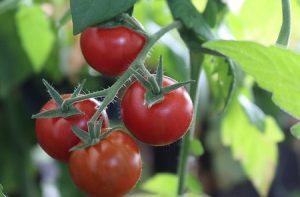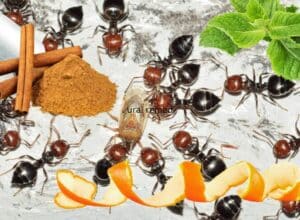Last Updated on October 18, 2023
Let’s take a look at kale types and learn how to grow them in your home garden.
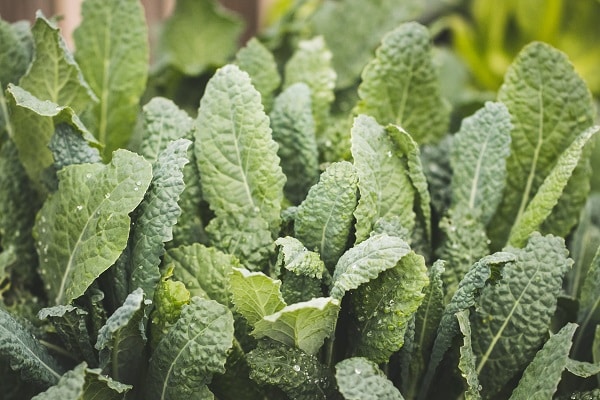
*This post may contain affiliate links. If you choose to purchase any of the products I have recommended, I may receive a commission at no cost to you.
Why should you grow kale?
- Kale is a cold hardy plant. It survives winter as far north as USDA zone 5.
- Kale can be planted twice a year.
- Kale requires minimal upkeep.
- Kale is healthy: this superfood’s nutrition profile is out-of-this-world rich with vitamins A, B6, C & E as well as calcium and iron.
- Kale is yummy! You can use kale for recipes or eat it raw in salads.
- Kale looks pretty in your garden because it has leaves of different colors and textures.
According to an Environmental Working Group, kale takes the #3 spot in the “dirty dozen produce containing high amounts of pesticides” list for 2021.
That’s one more reason to grow your own kale organically.
Types of Kale
There are 8 different types of kale plants that belong to 2 species: Brassica oleracea and Brassica napus.
(The genus name Brassica is Latin for cabbage).
- Kale (Brassica oleracea var. acephala)
- Scotch kale (Brassica oleracea convar. acephala, var. Sabellica)
- Marrow stem kale (Brassica oleracea convar. acephala var. Medullosa)
- Lacinato kale (palm kale) (Brassica oleracea convar. acephala var. Palmifolia)
- Flat leaf kale (Brassica napus var Pabularia)
- Perpetual (perennial) kale (Brassica oleracea var. Ramosa)
- Tronchuda kale (Brassica oleracea var. Costata)
- Chinese kale (Brassica oleracea var Alboglabra)
*This classification is based on a database for the Brassica genus made by the European Cooperative Program for Crop Genetic Resources
And now I’ll introduce you to the best cultivars of each kale type.
Best kale varieties
Try to plant a few varieties of kale with different leaf colors. It will make your veggie garden look very attractive!

Perennial kale
People often ask: Is kale a perennial?
Many gardeners grow kale as an annual, though most kales are considered biennials. There are even some kale varieties that are officially perennial like :
- ‘Daubenton’ kale (Brassica oleracea ramosa) – edible perennial kale with tender small leaves.
- ‘Taunton Deane’ (Brassica oleracea var Acephala) – is a very old British variety of edible perennial kale that grows six feet tall like a tree.
- ‘Lily White’ sea kale (Crambe maritima) – is an ornamental perennial kale variety.
These 3 perennial kale varieties are propagated by cuttings.
But if you cannot obtain perennial kale for your garden, don’t worry.
Here are some tips how to make biennial kale last:
- If you harvest your kale properly – always removing the bottom leaves, and letting the top grow – it can be harvested many times in multiple seasons.
- Also, if you establish for your kale plants a dedicated patch and let your kale in its second year go to seed and self sow, you’ll have a steady supply of new kale plants with young tender leaves year after year!
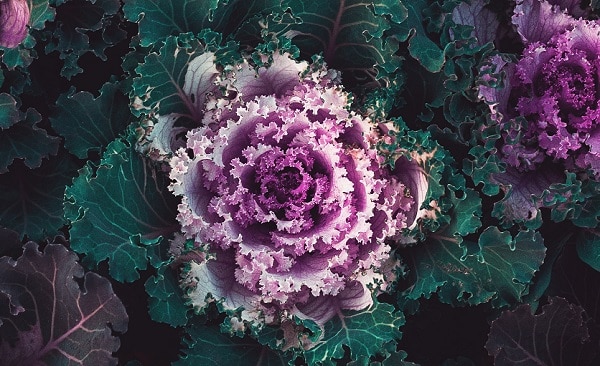
Is ornamental kale toxic?
Ornamental kale is edible but has a bitter flavor.
So it’s better used as garnishes – and who doesn’t love food that looks pretty? 😊
When to plant kale (according to your climate)
Kale can survive heat, but hot weather makes it tough and bitter. So if you live in hot climates where winter temperatures don’t dip below the teens (USDA zones 8-10), it’s better for you to sow kale in fall.
In areas where summers are cool, you can sow kale twice a year – in early spring for early greens, and in late summer for fall & winter harvest.
In spring – plant it as soon as the soil is 50 degrees Fahrenheit.
For a late fall crop – sow seeds 6 weeks before the first frost.
The flavor of summer-sown kale improves after the first fall frost.
How long does kale take to grow from seed?
You can start harvesting young kale leaves for salads after just 50 days of sowing seeds.
At 60-80 days, depending on the variety of kale you chose, you will be able to pick lower large leaves for cooking.
Kale will continue to grow leaves all season, and you’ll be able to have fresh kale until the snow covers your garden.
How much kale should you plant?
Grow 2 to 5 kale plants per person.
Do you know that there is a National Kale Day?
It’s celebrated on the first Wednesday in October.
When to plant kale? (indoors and outdoors)
- Starting seeds indoors
If you want to start the seeds indoors for spring planting – start them about 6 weeks before the last frost in your area.
If you are planting in the fall, you will want to start seeds indoors about 6 weeks before the first frost.
Kale seeds germinate quickly: in 5 – 8 days.
When kale seedlings grow four leaves, they are ready for transplanting.
- Sowing kale seeds outdoors
If you are sowing kale seeds directly into the ground in spring, you will want to plant them 5 weeks before the last frost.
If you are sowing seeds in the fall, you will want to plant 6 weeks before the first frost.
Where should you plant kale?
Kale grows well in full sun in cooler climates, but prefers semi-shade in hot sunny climates,
It needs to be planted in rich, loamy, moist, well-drained soil. You’ll want to find the perfect spot for your kale with good drainage. Water-logged soil conditions will stunt its growth.
Before planting kale, check your garden soil pH with a pH meter – it should be between 6.5 and 6.8. (You can buy a pH meter to test the pH of your soil).
if necessary add compost or other amendments until it falls within range 6.5 – 6.8. Learn how to increase or decrease soil pH here.

How to plant kale?
- Sow kale seeds in your outdoor garden one inch apart and ¼”- ½’’ deep in rows. Make rows 18” apart. If you are planting kale in a square foot garden – you can plant 1 kale in 1’ x 1’ square.
- Water your kale after planting – the soil should be wet, but not soggy.
- After 3 weeks, thin seedlings 8 to12 inches apart.
Give your kale plenty of space! If your seedlings are already growing tall but you want to save them, just dig a little deeper so that their stems can root again beneath the ground; this should help stabilize it better too!
Can you grow kale in pots?
You can grow kale in containers outdoors or indoors.
It will thrive in conventional pots or in a grow bag.
The good thing about growing kale in containers is that you can place the pot in the best spot for sunlight ( your kale should get 6 hours of sun per day), as well as ease of access.
Also, you can fill your pot with the correct pH-adjusted soil for optimal kale growth (like FoxFarm Ocean Forest organic potting soil) right off the bat.
And when the weather is too cold, you can bring the pot indoors and place it near a sunny window.
Be sure that a container you chose is large enough – it should be at least 12” in diameter and 12” deep, and also have drainage holes – kale will not grow well in waterlogged soil.
Insects, Diseases, and Other Kale Problems
Cabbage worms, cabbage loopers, flea beetles, slugs, aphids, and caterpillars are insects that may affect kale.
Diseases may include leaf spots and black rot.
Read related:
How to harvest kale so it keeps growing
When the leaves of your kale grow to about 8″ in length (roughly the size of your hand), it’s time for harvesting.
Pick individual outer leaves that are lowest on the plant – by doing so, you will give younger ones more time to grow.
if you harvest the leaves from the top, then you will stunt the plant’s growth
Extending the Season
Kale can withstand freezing temperatures and light snow. But when severe cold threatens – cover kale with floating row covers or straw.
Related reading:
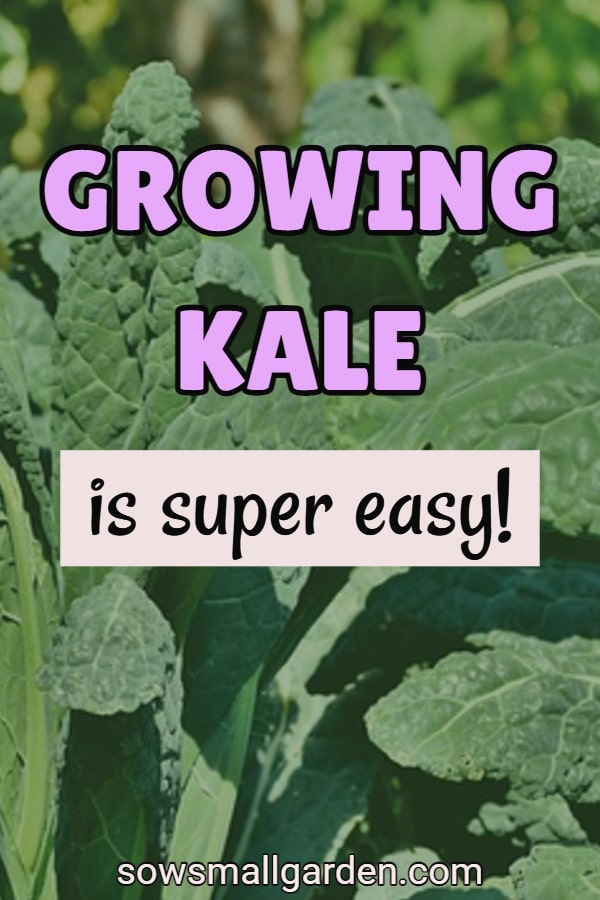
Pin for later reference!
Final thoughts on how to grow kale
As you can see, kale is a great addition to your spring or fall garden. I hope this article has given you some confidence and tips on how easy growing kale is! Don’t hesitate, get out there and start planting.
Happy gardening!👩🏽🌾
If you found this article useful – be so kind as to share it with friends.
You have read:
How to Grow Kale


